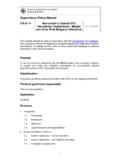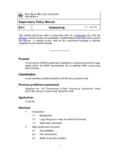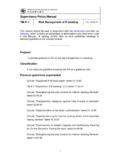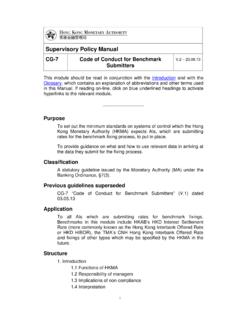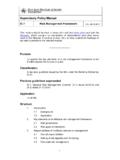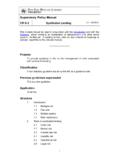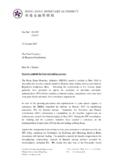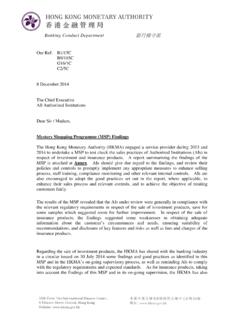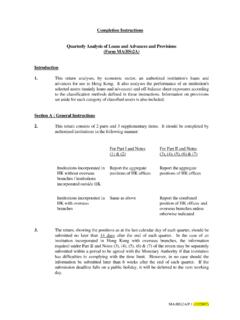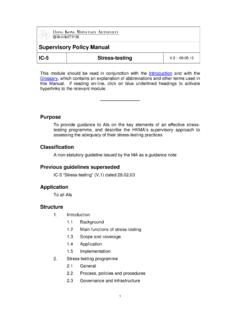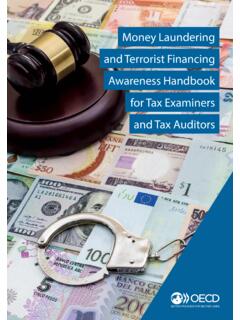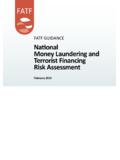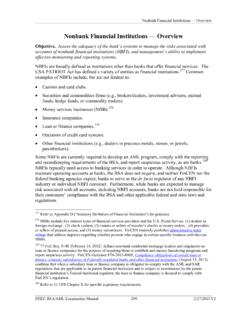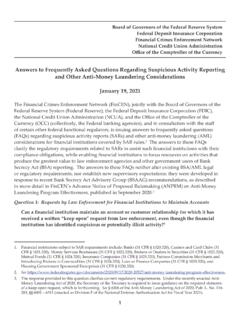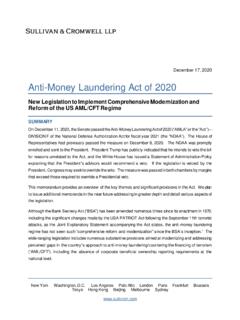Transcription of (For Stored Value Facility Licensees)
1 Guideline on Anti-Money laundering and Counter- financing of Terrorism (For Stored Value Facility Licensees). Revised September 2020. CONTENTS. Page OVERVIEW ..1. Chapter 1 Stored Value Chapter 2 Risk-based Chapter 3 AML/CFT Systems ..27. Chapter 4 Customer due diligence ..32. Chapter 5 Ongoing monitoring ..61. Chapter 6 Terrorist financing , financial sanctions and proliferation financing ..65. Chapter 7 Suspicious transaction reports and law enforcement requests ..70. Chapter 8 Chapter 9 Staff training ..81. Chapter 10 Wire transfers ..84. Appendix Limits for conducting CDD for SVF products ..89. Glossary of key terms and OVERVIEW. Introduction 1. This Guideline is published under section 54(1A)(b) of the Payment Systems and Stored Value Facilities Ordinance (PSSVFO) and takes effect on 2 July 2021.
2 2. Terms and abbreviations used in this Guideline should be interpreted by reference to the definitions set out in the Glossary part of this Guideline. Where applicable, interpretation of other words or phrases should follow those set out in the PSSVFO. 3. This Guideline is issued by the Hong Kong Monetary Authority (HKMA) and sets out the relevant anti-money laundering and counter- financing of terrorism (AML/CFT) statutory and regulatory requirements, and the AML/CFT standards which Stored Value Facility (SVF) licensees (which are not licensed banks1) or licensed banks (hereafter referred collectively as SVF licensees ). for the issue of SVF, should meet in order to comply with the statutory requirements under the PSSVFO. Compliance with this Guideline is enforced through the PSSVFO.
3 SVF licensees which fail to comply with this Guideline may be subject to disciplinary or other actions under the PSSVFO for non-compliance with the relevant requirements. 4. Chapter 1 of this Guideline provides specific guidance on SVF and covers all core requirements that are applicable to SVF licensees. However, Chapter 1 is incomplete on its own and should be read in conjunction with Chapters 2-10 which provide more detailed requirements in some specific 5. This Guideline is intended for use by SVF licensees and their officers and staff. This Guideline also: (a) provides a general background on the subjects of money laundering and terrorist financing (ML/TF), including a summary of the main provisions of the applicable AML/CFT. legislation in Hong Kong; and (b) provides practical guidance to assist SVF licensees and their senior management in designing and implementing their own policies, procedures and controls in the relevant operational areas, taking into consideration their special circumstances, so as to meet the relevant AML/CFT statutory and regulatory requirements.
4 1. A licensed bank means a bank which holds a valid banking licence granted under section 16 of the Banking Ordinance. 2. For example, while Chapter 1 specifies the high level requirement to conduct ongoing monitoring, Chapter 5 provides more details on that particular requirement. 1. 6. The relevance and usefulness of this Guideline will be kept under review and it may be necessary to issue amendments from time to time. 7. For the avoidance of doubt, the use of the word must or should . in relation to an action, consideration or measure referred to in this Guideline indicates that it is a mandatory requirement. The content of this Guideline is not intended to be an exhaustive list of the means of meeting the statutory and regulatory requirements.
5 SVF. licensees should therefore use this Guideline as a basis to develop measures appropriate to their structure and business activities. 8. This Guideline also provides guidance in relation to the operation of the criteria set out in section 6 of Part 2 of Schedule 3 to the PSSVFO. This will assist SVF licensees to meet their legal and regulatory obligations. An SVF licensee must have in place adequate and appropriate systems of control to ensure that it complies with any rules, regulations or guidelines issued by the HKMA. 9. A failure to comply with any provision of this Guideline may reflect adversely on whether an SVF licensee continues to comply with the minimum criteria for licence granted set out in section 6 of Part 2. of Schedule 3 to the PSSVFO, which requires an SVF licensee to have in place adequate and appropriate systems of control for preventing or combating possible money laundering or terrorist financing .
6 The HKMA is empowered to exercise various provisions under the PSSVFO in case of non-compliance with the requirements set out in this Guideline. The nature of money laundering and terrorist financing 10. The term money laundering (ML) means an act intended to have the effect of making any property: (a) that is the proceeds obtained from the commission of an indictable offence under the laws of Hong Kong, or of any conduct which if it had occurred in Hong Kong would constitute an indictable offence under the laws of Hong Kong;. or (b) that in whole or in part, directly or indirectly, represents such proceeds, not to appear to be or so represent such proceeds. 11. There are three common stages in the laundering of money, and they frequently involve numerous transactions.
7 An SVF licensee should be alert to any such sign for potential criminal activities. These stages are: 2. (a) Placement - the physical disposal of cash proceeds derived from illegal activities;. (b) Layering - separating illicit proceeds from their source by creating complex layers of financial transactions designed to disguise the source of the money, subvert the audit trail and provide anonymity; and (c) Integration - creating the impression of apparent legitimacy to criminally derived wealth. In situations where the layering process succeeds, integration schemes effectively return the laundered proceeds back into the general financial system and the proceeds appear to be the result of, or connected to, legitimate business activities. 12. The term terrorist financing (TF) means: (a) the provision or collection, by any means, directly or indirectly, of any property.
8 (i) with the intention that the property be used; or (ii) knowing that the property will be used, in whole or in part, to commit one or more terrorist acts (whether or not the property is actually so used);. (b) the making available of any property or financial (or related). services, by any means, directly or indirectly, to or for the benefit of a person knowing that, or being reckless as to whether, the person is a terrorist or terrorist associate; or (c) the collection of property or solicitation of financial (or related) services, by any means, directly or indirectly, for the benefit of a person knowing that, or being reckless as to whether, the person is a terrorist or terrorist associate. 13. terrorists or terrorist organisations require financial support in order to achieve their aims.
9 There is often a need for them to obscure or disguise links between them and their funding sources. It follows then that terrorist groups must similarly find ways to launder funds, regardless of whether the funds are from a legitimate or illegitimate source, in order to be able to use them without attracting the attention of the authorities. Legislation concerned with money laundering , terrorist financing , financing of proliferation of weapons of mass destruction and financial sanctions 14. The Financial Action Task Force (FATF) is an inter-governmental body formed in 1989. The objectives of the FATF are to set standards and promote effective implementation of legal, regulatory and operational measures for combating of ML, TF, the financing of proliferation of weapons of mass destruction (PF), and other related threats to the integrity of the international financial system.
10 The FATF has developed a series of Recommendations that are recognised as the international standards for combating of ML, TF and PF. They form the basis for a co-ordinated response 3. to these threats to the integrity of the financial system and help ensure a level playing field. In order to ensure full and effective implementation of its standards at the global level, the FATF. monitors compliance by conducting evaluations on jurisdictions and undertakes stringent follow-up after the evaluations, including identifying high-risk and other monitored jurisdictions which could be subject to enhanced scrutiny by the FATF or counter-measures by the FATF members and the international community at large. Many major economies have joined the FATF which has developed into a global network for international cooperation that facilitates exchanges between member jurisdictions.
